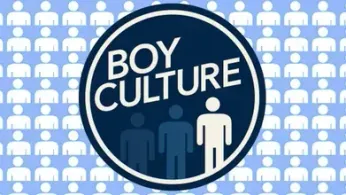
3 hours ago
Beloved Blog 'Boy Culture' to Close After Nearly Two Decades Online
READ TIME: 3 MIN.
Boy Culture, a cornerstone of LGBTQ+ digital journalism, will bring its nearly 20-year run to an end this fall, founder Matthew Rettenmund announced in a heartfelt post to readers. The website, known for its blend of news, pop culture analysis, queer history, and personal reflection, has served as both a chronicle and a community resource for LGBTQ+ people since its launch in 2005. While the site will close, Rettenmund emphasized that his commitment to queer storytelling and advocacy will persist through other platforms, including Substack and social media.
Since its inception, Boy Culture has played a significant role in the evolution of LGBTQ+ media representation. The site provided a space for nuanced discussions about identity, politics, and pop culture, as well as interviews with queer artists, activists, and public figures. Its longevity is notable in a media climate where many LGBTQ+ outlets have struggled to stay afloat, reflecting both the dedication of its creator and the loyalty of its readership. The site's closure marks an inflection point in the broader story of queer media, which has seen both dramatic gains in representation and persistent challenges related to funding and sustainability .
Matthew Rettenmund, an established writer and editor, used Boy Culture as a platform for both journalistic reporting and personal narrative. The blog’s tone was unapologetically queer and often personal, blending coverage of major events with commentary on LGBTQ+ history, entertainment, and the challenges facing the community. As media scholar Eve Ng has noted, LGBTQ+ platforms like Boy Culture have been vital in providing representation and fostering online community—particularly as mainstream outlets have alternated between embracing and sidelining queer stories .
The closure comes at a time of significant change—and ongoing uncertainty—for LGBTQ+ media broadly. As the digital landscape has shifted, many sites that once thrived during the blog era have faced declining ad revenues, increased competition from social media, and the consolidation of queer content by larger corporations. This trend has been felt across the media industry, but is particularly acute in LGBTQ+ spaces, where independent voices often struggle to secure the resources needed to survive .
In his announcement, Rettenmund did not cite a single reason for the site's closure but pointed to the realities of sustaining independent media in 2025. Readers were encouraged to continue following his work on Substack and across social media platforms, where he plans to continue sharing commentary, interviews, and queer cultural insights—a move reflecting broader trends in online journalism, where individual writers increasingly build direct relationships with their audiences .
Over its lifespan, Boy Culture built a reputation for incisive commentary and for documenting moments big and small in LGBTQ+ history. The site covered the legalization of same-sex marriage, the rise of LGBTQ+ representation in entertainment, and the ongoing struggles for trans rights and racial justice within the queer community. It also provided a platform for emerging queer voices and highlighted the importance of remembering LGBTQ+ history at a time when anti-LGBTQ+ sentiment and policy measures have continued to surface .
The timing of the announcement, coming just before the site's 20th anniversary, carries symbolic weight. As LGBTQ+ people face renewed legislative challenges and campaigns to curtail visibility—such as the recent cessation of national LGBTQ+ youth suicide prevention hotlines —the importance of queer-owned, independent media has never been clearer.
The closure of Boy Culture raises questions about the future of LGBTQ+ digital spaces and the need for sustainable models of funding and support. As larger media organizations consolidate, and as anti-LGBTQ+ political pressures mount in some regions, queer people continue to rely on independent outlets for representation and community. The migration of content creators to platforms like Substack and Patreon suggests a new phase for queer media, one centered on direct audience engagement and financial support but also potentially limiting reach for those outside established networks .
For now, fans and readers are left to reflect on the legacy of Boy Culture—a site that chronicled two dynamic decades of LGBTQ+ life, and that will be remembered for its wit, honesty, and commitment to queer storytelling. As Rettenmund transitions to new platforms, his work remains a testament to the enduring need for authentic, independent LGBTQ+ voices in the media.






